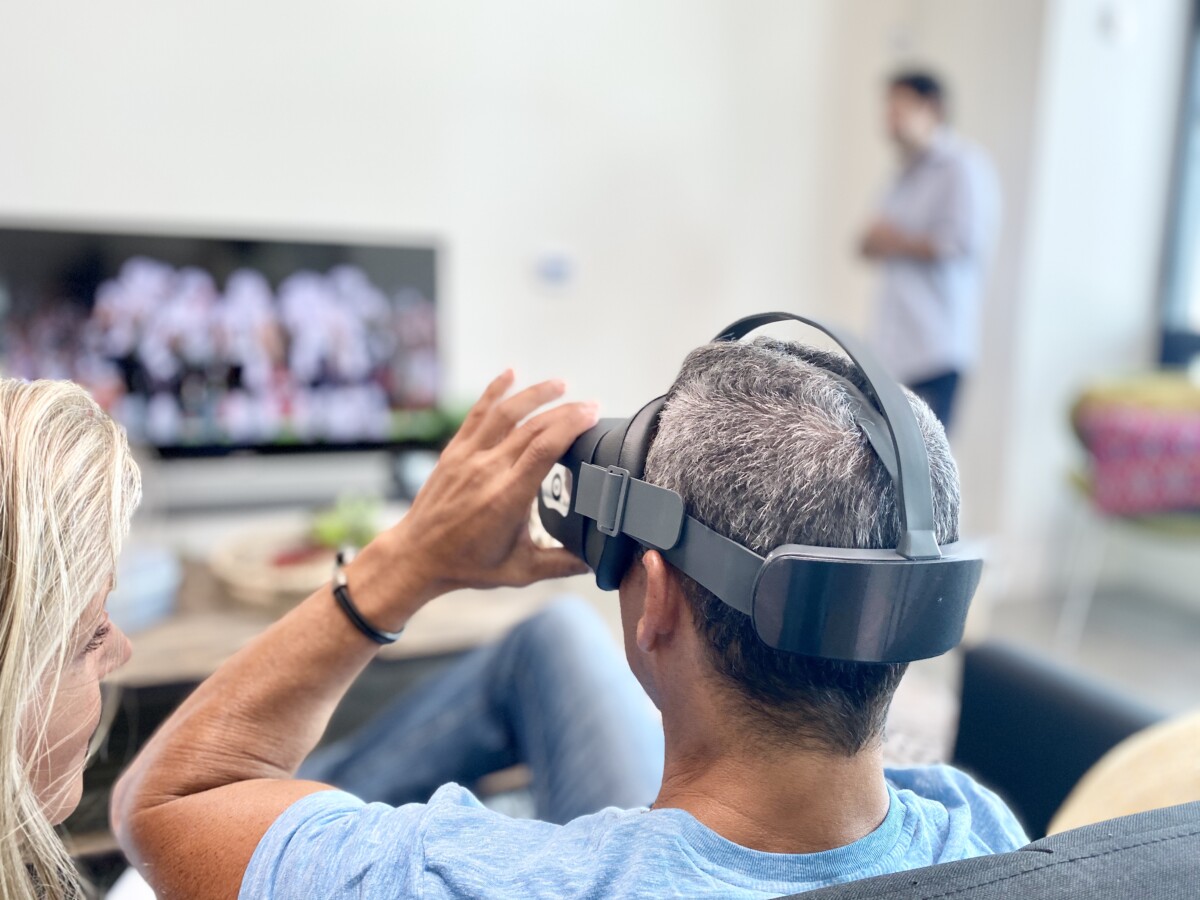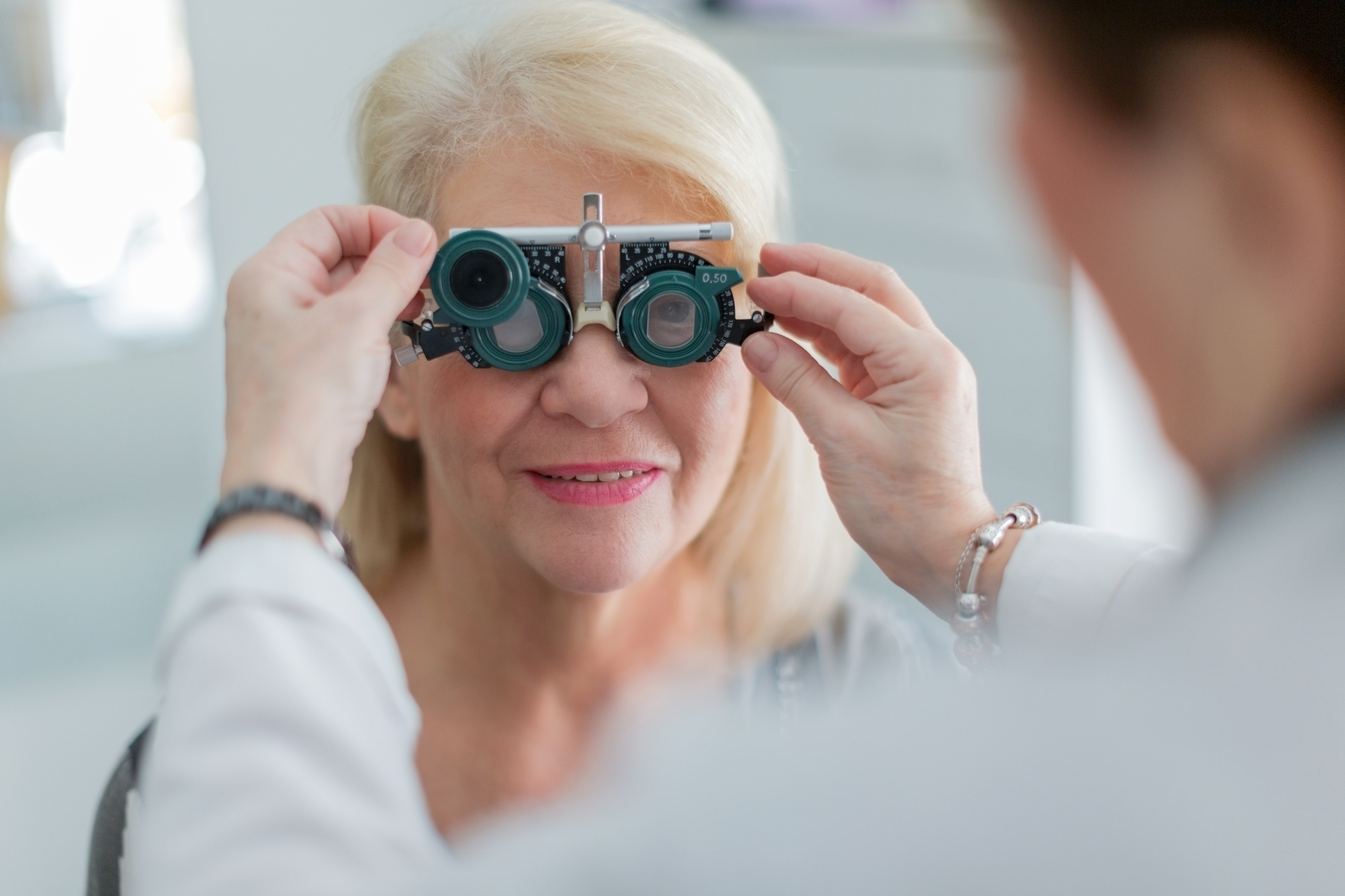With vision loss, you or your loved one might struggle to perform everyday tasks, leading to a loss of independence and potentially, a lower quality of life. However, low vision devices offer hope and empowerment to individuals living with visual impairments, including those living with macular degeneration, retinitis pigmentosa, and glaucoma.
What are low vision devices? Essentially, low vision devices help individuals with vision impairments see more clearly. From glasses and video magnifiers to assistive technology, there are various options on the market—helping you regain your vision and your life. So, what are your options exactly? What is the cost of not investing in such devices? And which low vision device makes sense for you or your loved one?

Vision Loss & Mental Health: Why Low Vision Devices Matter
About 2.2 billion people in the world have a vision impairment. About 36 million of these individuals are blind, and another 217 million have severe to moderate vision loss. About one-third of all of these individuals experience at least mild depressive symptoms, indicating an undeniable link between vision loss and mental health.
Individuals with low vision report feeling isolated, lonely, anxious, and frustrated. Furthermore, when anxiety is left untreated, it can lead to a greater risk of developing depression. On top of this, loneliness or social isolation is known to have negative repercussions on a person’s mental health and quality of life.
Luckily, today’s innovations and technology offer viable solutions for those experiencing severe vision loss. Low vision devices empower individuals with vision loss to participate in the hobbies they love, as well as perform daily activities. This allows these individuals to gain some of their independence back and connect with those they love through activities and their sense of sight.
Inevitably, some of these devices may prove better than others depending on your unique situation and the severity of your vision loss. In the following sections, we’ll review the most common and popular low vision devices, as well as which one might be best for you.
Low Vision Devices for the Visually Impaired in 2022
Low vision aids and devices come in many shapes and forms. The type of vision aid you require may depend on the severity or cause of your vision loss. Below, we provide explanations of visual aids that you may want to consider, categorizing them into optical aids for the visually impaired and electronic devices for low vision.
Optical Aids for the Visually Impaired
Optical aids for the visually impaired include low vision magnifiers, telescopes, low vision glasses, and glare-control devices. These are usually used to magnify objects and surroundings through lenses. Typically, these low vision tools work by enlarging an object or surroundings directly in a person’s field of vision. So, let’s take a closer look!
Low Vision Magnifier
Individuals with low vision can use stand magnifiers for reading. This usually involves the placement of the tool over top of text in order to magnify it. Some of these magnifiers even come equipped with lights to illuminate the text even further. The downside of this type of low vision magnifier is that it typically requires the person to bend over a desk to read, which can result in aches and pains due to poor posture.
Alternatively, other magnifiers include hand-held magnifiers, pocket magnifiers, and even electronic magnifiers (which we’ll talk more about in a later section).
Ultimately, the best magnifying glass may depend on your condition. For instance, magnifying glasses and tools are particularly useful vision aids for macular degeneration. This is because as the condition progresses, more magnification and light are required to see.
Low Vision Glasses
Another type of low vision magnifier comes in the form of reading glasses. These are very common and can help to see a wider field of vision. However, with reading glasses, you may find you need to hold objects or articles closer to your face to properly view them. After some time, this may become tiring.

Telescopes
For individuals with visual impairments, telescopes offer an option for distances. Telescopes, similar to glass magnifiers, come in many forms. As low vision devices for distance, you can purchase hand-held, mounted, bioptic, and clip-on variations. This type of vision aid also has the ability to magnify objects anywhere from 2 to 10x, providing individuals with severe vision loss an easy and simple solution.
Glare-Control Devices
Glare is particularly problematic for those with a visual impairment. Glare already causes significant vision loss. Yet, for individuals with conditions such as cataracts, this can further reduce their visual acuity and contrast sensitivity. Luckily, glare-control devices can help decrease glare.
These types of low vision devices are used similarly to regular glasses. However, they have tinted lenses and may include “hats,” “caps,” or “visors.” Depending on your needs, you may need to try a few different tents until you find the right one.
Electronic Devices for Low Vision
In the last 100 years, technology has come a long way, including the creation of innovative devices enabling and empowering individuals with visual impairments. There are many different electronic optical devices for low vision available, including electronic magnifiers, phone applications, dictation software, and electronic glasses. In the following sections, we take a closer look at these electronic devices.
Electronic Magnifiers
Magnification devices for the visually impaired aren’t just restricted to the classic magnifying devices. From an electronic magnifier with a light to a video magnifier, there are tons of options on the technological side of things.
Video magnifiers, also known as CCTV readers (Closed Circuit Televisions), include a built-in camera that magnifies images, providing an easy go-to low vision aid for reading. These may be stand-mounted or handheld. The image is, then, projected onto a video monitor, computer monitor, or television screen.
Phone Applications
Many phone apps can help assist individuals with low vision. For example, LookTel Money Reader helps recognize currency. Other apps also function as reading devices for low vision, converting printed text into high-quality audio, and can help identify specific objects.
Dictation Software
Dictation software is another form of assistive technology. This allows individuals to use voice-to-text software, which even involves the ability to format what you’re texting. Some devices can even convert this into Braille hard copy, if needed.
Electronic Glasses
Electronic glasses, such as the Vision Buddy, can help individuals with visual impairments see their loved ones, view their surroundings, enjoy hobbies, read with ease, perform activities, and even watch TV. In many ways, this low vision device combines the best of the best.
Many other low vision aids are limited in their use and applications. Yet, electronic glasses offer the latest in assistive technology, offering more than one solution.
Which Device is Most Useful for People with Low Vision?

Ultimately, the type of low vision device that is right for you or your loved one depends on your or your loved one’s unique situation. Arguably, electronic glasses offer an all-in-one assistive technology aid for low vision. At the same time, you may want to consider the following factors when making your decision.
Your Visual Condition & Visual Acuity
Visual acuity refers to how well your eyes can make out shapes or object details. This is impacted by light, glare, contrast, and other factors, as well as if you have a visual impairment or not.
Many low vision devices are suitable for individuals with conditions including macular degeneration, cataracts, glaucoma, diabetic retinopathy, retinitis pigmentosa, and optic nerve hypoplasia. For instance, if you’re sensitive to light, glare control devices can help. If you have difficulty seeing objects from afar, telescopes and magnifiers may improve your vision.
Your Lifestyle
Ideally, you want to find a solution that will fit in with your lifestyle, hobbies, and goals. For example, if you want simply want to be able to read before bed, you may require an electronic magnifier with a light or something similar. If you want a device that will solve multiple problems in your daily life, you may choose electronic glasses.
Your Budget
While taking your visual condition and lifestyle into account is important, it’s also necessary to note that some of these devices differ in costs, with some providing more affordable solutions than others. At the same time, you may want to weigh the cost of your vision and what that would mean for you and your life when making your decision.
Frequently Asked Questions (FAQs)
By now, you might have a few more questions. Check out the frequently asked questions below to find your answers!
What are low vision aids?
Low vision aids include all of the devices explored above, such as magnifiers, telescopes, reading glasses, glare-control devices, and electronic glasses. These types of aids and devices, generally, help magnify objects and texts, contributing to improved vision.
Where to buy low vision glasses?
You can purchase low vision glasses online or at your optometrist’s office. For electronic low vision glasses, you can purchase a pair from Vision Buddy online. Depending on the severity of your vision loss, you may want to discuss what option is best for you with your eye doctor.
How do you prevent macular degeneration from progressing?
Unfortunately, macular degeneration cannot be cured. Yet, there are a few recommendations that apply in regards to slowing down the progression of this condition, such as eating a healthy and balanced diet, quitting smoking, taking supplements if needed, and wearing sunglasses.
How can the elderly help with vision problems?
As we get older, the body faces inevitable wear and tear, including reductions in our visual capacity. Ensuring you or your loved one attends regular eye check-ups is the first step in preventing and reducing vision problems and vision loss. When visual loss happens, there are a few things that can help, including:
- Ensuring hallways, stairs, and rooms are well-lit
- Keeping clutter to a minimum to prevent falls
- Using contrasting colors for decor and furniture
- And using low vision devices to maintain independence and quality of life.
What is the best magnifier for someone with macular degeneration?
This depends on your vision impairment. Magnifiers range from 2x to 10x magnification. They also come as glasses, handheld devices, stands, and more. Ultimately, which magnifier you choose will depend on your needs and goals.
What is assistive technology?
Assistive technology is a software program, piece of equipment, or product that helps to improve or maintain functional activities. For example, electronic glasses help an individual maintain their independence at home by allowing them to clearly see objects and loved ones, watch TV, read books, and more.
Vision Buddy: The World’s First Ultra-Simple Virtual Reality Headset for the Visually Impaired
Vision Buddy, the first HD TV watching assistive device, allows individuals with vision impairments to regain their independence once again. Vision Buddy is the first all-in-one assistive device, designed to help you or your loved one perform daily tasks. With one click, Vision Buddy allows you to see the world around you, use your computer, magnify objects, watch TV, play video games, and so much more.

With a variety of low vision devices, arguably, electronic glasses are the new frontier. There’s no need for multiple tools—instead, you get everything all in one easy-to-use device. Try your risk-free trial today!
